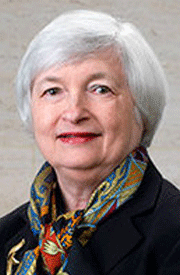Young, high-growth companies are important jobs generators. But the number of U.S. start-ups is in long-term decline. Using Atlanta Fed research data, Economy Matters examines the implications for the U.S. labor market.

Editor's note: This is the first in a series of articles that explores the findings of the Atlanta Fed's Gazelle Project.
The Gazelle Project collected qualitative data in a series of face-to-face interviews with southeastern entrepreneurs who started their businesses within the past 13 years. This series of articles will summarize the results of the project. Articles will examine a decline in business formations to set the context; firm founders' motivations and experience; the role of social capital, including social and professional relationships, in building gazelles; and the financing of gazelles.
The Atlanta Fed's Regional Economic Information Network (REIN) staff interviewed dozens of entrepreneurs across the Southeast to gather information about three broad areas:
- Human capital: The skills, knowledge, and experience of the individuals involved in launching and building the businesses.
- Social capital: The network of social and professional relationships that the founders use to identify and access resources.
- Financial capital: The financing the founders used to begin operations and to fund growth.
The Atlanta Fed's interest in small business focuses on three related issues: the role of small business in job creation; the role of small business in local economic development, and the role of the banking system in small business financing.
From U.S. presidents to chamber of commerce chiefs, American leaders have long extolled the virtues of small business. A few high-profile examples:
- "Small business is the lifeblood of the economy."—President Barack Obama
- "America is small business."—President Ronald Reagan
- "Small business is the cornerstone of our free enterprise system."—President Theodore Roosevelt (and countless economic boosters)
Most American businesses are small. Among 5 million employer firms, virtually all of them—more than 96 percent—employ fewer than 50 people. (Employer firms are businesses with at least one employee who is not an owner, according to the U.S. Census Bureau.) Yet size is not singularly important. A growing body of research shows that the age of firms is perhaps more crucial to economic performance than their size alone.
New business creation on the decline
Fewer companies have started up since the Great Recession. In the three decades leading up to it, about 500,000 employer firms were created each year (see the infographic). During the recessions of 1990–91 and 2001, the number of business formations dipped by less than 5 percent but quickly recovered.
New Firm Formations by Southeast Metropolitan Area
Click on a city point in the map below to view data on that metro area.
Source: U.S. Census Bureau Business Dynamics Statistics
View data for:
Atlanta |
New Orleans |
Birmingham |
Jacksonville
| Tampa |
Miami |
Nashville |
Orlando |
Augusta |
Baton Rouge |
Cape Coral-Ft Myers
|
Chattanooga |
Deltona |
Gulfport-Biloxi
| Knoxville |
Lafayette |
Lakeland-Winter Haven
| Mobile |
Montgomery |
Pensacola |
Savannah |
all Southeast metro areas
The Great Recession appears to have had a larger, more lasting impact on business formation. At the low point in 2010, only about 390,000 employer companies started, nearly a third fewer than just before the recession. Start-ups climbed to 413,000 by 2012, still well below prerecession levels.
Longer-term forces are at work. The rate of business creation has been slowly declining since the 1980s. Consequently, new companies, those five years old or younger, have become an increasingly smaller share of all firms over time. In the early 1980s, new companies made up roughly 13 percent of all firms in the economy, according to Atlanta Fed calculations based on the Census Bureau's Business Dynamics Statistics data set. That share declined to 11 percent in the early 1990s, 10 percent in the early 2000s, and 8 percent in 2012.
New firms are also creating fewer jobs. Businesses are beginning operations with fewer employees than they did historically and are hiring more slowly when they do grow. Researchers at the Ewing Marion Kauffman Foundation have referred to this combination of starting smaller and staying smaller as "America's slow leak in job creation."
What's more, the decline in business starts is happening across the country. A 2014 Brookings Institution report found that compared with three decades ago, new firms are entering the economy at lower rates in every state and all but one metropolitan area (see the chart).
It's about more than jobs

Jerome Powell

Janet Yellen
The rate of business formation is relevant for reasons beyond jobs alone. Fewer start-ups could depress not only employment, but also "productivity, business innovation, and hence trend output," Federal Reserve Governor Jerome Powell noted in an April 2015 speech. Fed Chair Janet Yellen has highlighted the important role firm creation can play in helping people climb the economic mobility ladder.
The Fed's 2013 Survey of Consumer Finances "shows that ownership of private businesses is a significant source of wealth and can be a vital source of opportunity for many households to improve their economic circumstances and position in the wealth distribution."
The financial crisis and ensuing recession clearly exacerbated the start-up downturn. High levels of policy and economic uncertainty hampered business owners' planning. Meanwhile, sources of funding for potential entrepreneurs evaporated: The value of real estate collateral and many 401(k) accounts withered, angel investors and venture capitalists retrenched, and banks tightened lending standards, according to Atlanta Fed analysis.
Even today, years after the end of the recession, small firms call the lack of credit availability a top challenge, according to a recent Federal Reserve survey of small businesses.
Beyond creation: To grow or not to grow
New firms create jobs, but so do growing firms. After the initial start-up phase, most businesses either fail or stay small. Yet there is a small percentage of relatively young firms that grow rapidly—gazelles. These gazelles are major jobs generators and thus critical to the nation's economic health, according to research by the Atlanta Fed and others.
Economists at the U.S. Bureau of Labor Statistics and Census Bureau found that between 2009 and 2012, fewer than 3 percent of firms under four years old experienced high growth. But these fast-growing young firms hired more than a million people, accounting for one of 12 jobs created at all expanding firms.
Moreover, a young firm is more likely to grow quickly than a mature company. About 40 percent of high-growth firms were less than four years old and more than two-thirds were under 10 years old.
Gazelle herd thinning
But a potential problem may be part of the overall decline in the rate of business formation: the gazelle herd is thinning. In 2012 the United States had 25 percent fewer new companies than just five years earlier, according to data from the census. During the same period, the ranks of high-growth firms dipped by 20 percent (see the chart).
A smaller gazelle herd matters because—in business just as in the natural world—it's difficult for a gazelle to maintain top speed. So fewer gazelles means fewer chances to see that rare animal that keeps growing rapidly even as it matures.
"It is very unusual to maintain high growth momentum," Atlanta Fed economists John Robertson and Anil Rupasingha wrote in a 2013 paper. Gazelles, they found, are no more likely to achieve a second rapid growth phase than non-gazelles and no more likely to survive than other firms of similar age. Perhaps counterintuitively, their observation could be considered positive: Although a dearth of business formations has robbed the labor market of a potentially strong jolt, that jolt might not necessarily last long.
Understanding declining entrepreneurism
Policy makers, businesspeople, and researchers are intensely interested in understanding why business creation rates are declining and why gazelles are becoming scarcer.
Piecing together the puzzle isn't easy. Though researchers have put forth various theories, the cause of the decline in the nation's business formation rate remains unclear. Research generally shows that certain factors help foster entrepreneurship: business-friendly regulations, high education levels, and positive cultural perceptions of business ownership. Recent reports from the Brookings Institution and the Kauffman Foundation recommend that cities establish connections among entrepreneurs, government, business incubators, and financiers. Such networks can help entrepreneurs do everything from find talent to reach new customers.
The Atlanta Fed's Gazelle Project explores some factors behind high growth. Through one-on-one interviews with the founders of fast-growing firms, we learned about their decision to start a business and what helped them succeed. The hope is that the findings of the Gazelle Project, along with the results of other surveys and analysis, will add to our understanding of what allows high-growth firms to flourish.
Next in this series: What motivates gazelle founders? The next installment in the Gazelle Project series will explore the characteristics of these successful entrepreneurs. It will also include profiles of five gazelle founders.





